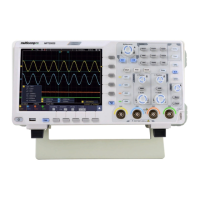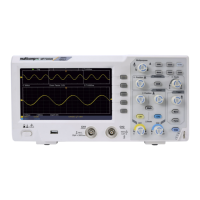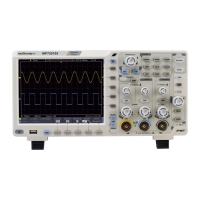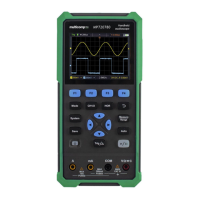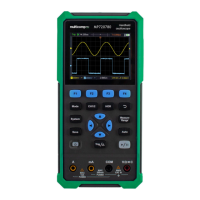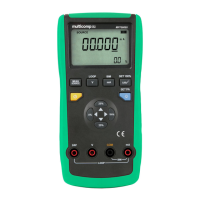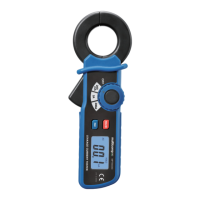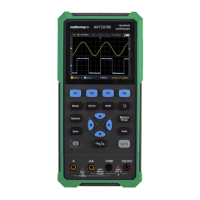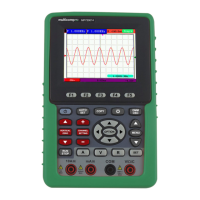User Manual
Alternate trigger (Trigger Type: Pulse) menu list:
Set vertical channel trigger type as pulse trigger.
Select CH1 as the trigger source.
Select CH2 as the trigger source.
Not allow DC portion to pass.
Allow all portion pass.
Not allow high frequency of signal pass and only low
frequency portion pass.
Not allow low frequency of signal pass and only high
frequency portion pass.
(SDS5032E(V), SDS5052E(V) do not have HF and LF)
Select pulse width condition and turn the M rotary
control to set time.
Acquire waveform even no trigger occurred
100 ns - 10 s, adjust M rotary control to set time
interval before another trigger occur.
Set Holdoff time as 100 ns
Term interpretation
1. Source: Trigger can occur from several sources: Input channels (CH1, CH2), Ext,
Ext/5.
Input: It is the most commonly used trigger source. The channel will work when
selected as a trigger source whatever displayed or not.
Ext Trig: The instrument can be triggered from a third source while acquiring data
from CH1 and CH2. For example, to trigger from an external clock or with a signal
from another part of the test circuit. The EXT, EXT/5 trigger sources use the external
trigger signal connected to the EXT TRIG connector. Ext uses the signal directly; it has
a trigger level range of -0.6 V to +0.6 V. The EXT/5 trigger source attenuates the
signal by 5X, which extends the trigger level range to -3 V to +3 V. This allows the
oscilloscope to trigger on a larger signal.
2. Trigger Mode:
The trigger mode determines how the oscilloscope behaves in the absence of a trigger
event. The oscilloscope provides three trigger modes: Auto, Normal, and Single.
Auto: This sweep mode allows the oscilloscope to acquire waveforms even when it
does not detect a trigger condition. If no trigger condition occurs while the oscilloscope
is waiting for a specific period (as determined by the time-base setting), it will force
itself to trigger.
